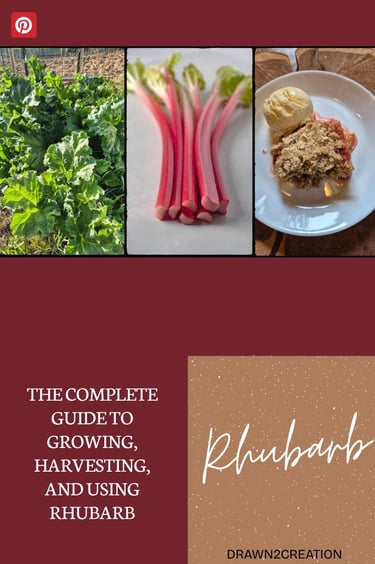How to Grow, Harvest, Store, & Use Rhubarb: A Complete Guide + Recipes
Discover how to grow rhubarb in your garden, harvest it properly, store it for year-round use, and try delicious rhubarb recipes--including pie, crisp, syrup, and dehydrated snacks.
RECIPES
5/22/20259 min read


The Complete Guide to Growing, Harvesting, Storing, and Using Rhubarb
Rhubarb is a favorite of my husband. He loves the tart flavor when it is paired with something sweet! Rhubarb really is a great plant to have in your home garden or around your yard. Honestly...it can thrive with minimal effort. Sounds great, right? Whether you are planting your first rhubarb patch or just looking for ways to care for your plants or use your harvest, this guide will walk you through everything you need to know about growing, harvesting, storing, and using rhubarb.
If you aren't too familiar with rhubarb, let me begin by telling you a bit about it. Its scientific name is Rheum rhabarbarum (whew...that is a mouthful!). It is a hardy perennial vegetable that is known for its striking red stalks. It has a tart flavor that is ideal for pies, jams, and sauces. Only the stalks are used and cooked with...the leaves are toxic, so be sure to avoid those! Rhubarb is an extremely low maintenance plant, it is deer-resistant, and it has a long growing season. This makes it a great addition to any home garden!
This guide will break down rhubarb info into four main categories:
Note: I do recommend products on this page. As an Amazon affiliate, I earn from qualifying purchases (at no additional cost to you).
Click to pin for later!
Growing Rhubarb
Like I said, rhubarb is a pretty easy and low maintenance plant to grow, but there are a few things you should keep in mind.
First of all, if you are starting fresh and are planning to plant rhubarb, there are actually a few different varieties that you can choose from! Here are a few common ones:
Victoria: This variety has large, greenish-red stalks. The stalks will often go from red to green along the length of the stalk. It is excellent for cooking because it has a thin skin, and it does not need to be peeled first. This variety often produces an earlier harvest. It thrives in Zones 3-8.
Canada Red & Crimson Red: This variety has a sweeter flavor. It also has vibrant red stalks. These varieties tend to be a bit smaller than some of the green-stalked varieties. It thrives in Zones 3-8.
MacDonald: This variety is a vigorous grower and is resistant to root rot. It is good for pies, canning, and freezing. It thrives in Zones 4-7.
Valentine: This variety has broad, deep red stalks. It is not as acidic as some other varieties and produces few or no seed stalks. It thrives in Zones 4-9.
When you have your rhubarb and are ready to plant, you'll want to choose the best planting time and location. Plant in the early spring or fall. This will give the roots time to become established before hot summer weather arrives. Choose a sunny spot that has well-drained and fertile soil. Be sure to give your rhubarb plant plenty of space! Space plants 3-4 feet apart. This gives the mature plants room to grow and spread.
When you plant, it generally works well to use crowns (plants with established root systems) rather than seeds. This just lets you see growth a bit faster. Plant crowns with buds just below the soil surface. Don't harvest any stalks the first year that you plant. I know...it can be hard to wait! However, this will give your plant time to establish its roots.
Once your plants are established, there are a few things to keep in mind. Rhubarb is generally pretty easy to grow, but here are a few tips!
Fertilize established plants in the spring after growth starts. You can use a general garden fertilizer or just place some compost around the plant.
Keep the soil consistently moist, but not overly soggy.
You can use mulch around the plant to suppress weeds and retain moisture.
As your plant grows, you may find you want to divide it. Do this in the early spring or later in the fall. Use a sharp spade or shovel. Cut the crown into pieces, keeping a strong bud on each piece. Leave one piece in the original location and move cut pieces to new locations.
Sometimes, no matter what, problems arise. Here are a few problems that may arise with your rhubarb plants.
Crown rot: This isn't common in the home garden, but it is caused by a mold that thrives in wet conditions. Prevent by planting in well-drained soil.
Slugs and Snails: Again, they aren't super common, but if you spot them, you can handpick them off or use organic slug deterrents. Some like to spread wood ashes or eggshells around the plants to deter these pests!
Harvesting Rhubarb
When to harvest:
First year after planting: Don't harvest. Allow the roots time to establish themselves.
Second year after planting: Harvest lightly.
Third year and beyond: Harvest as normal. However, do not harvest more than a third of the stalks in any year. You want the plant to remain strong!
It is pretty simple to harvest rhubarb stalks. Simply grasp the stalk at the base of the plant and twist. As you twist, gently pull the stalk away from the base of the plant. Some cut the stalks with a knife, but I would avoid that, as it can promote rot.
⭐Important: Always remove and discard the leaves. They are toxic!
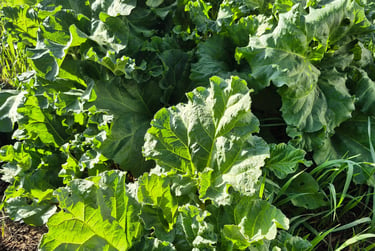

Storing Rhubarb
If you are going to use the harvested rhubarb within two weeks, you can simply wrap the stalks in damp paper towel and place them in a plastic bag. Store the bag in the crisper drawer of your refrigerator.
If you are not going to use the stalks within two weeks, consider preparing them for long-term storage. You can:
Wash, dry, and chop the stalks into small chunks.
Blanch the chopped pieces by placing them in boiling water for one minute. Then, remove and place the pieces in ice water to stop the cooking process.
Freeze in a single layer on a baking sheet. After the pieces are frozen, transfer them to a freezer storage bag or container and freeze them.
Using Rhubarb
Rhubarb pairs well with a lot of things in the kitchen. Its tart flavor is most often used along with some sort of sweetener. It is commonly paired with strawberries, apples, ginger, and vanilla. Here are a few fun recipes to get you started with using your rhubarb harvest!
Strawberry Rhubarb Crisp
Ingredients
Filling:
3 cups of chopped rhubarb
2 cups of sliced strawberries
1/2 cup of granulated sugar
1 tablespoon of lemon juice
1 tablespoon of corn starch
Topping:
3/4 cup old-fashioned oats
1/2 cup of all-purpose flour
1/2 cup of brown sugar
1/2 teaspoon of cinnamon
6 tablespoons of cold butter, cut into small pieces
Instructions
Preheat the oven to 375 degrees Fahrenheit.
Mix together the rhubarb, strawberries, sugar, lemon juice, and cornstarch.
Place the fruit mixture into a greased 8x8 inch baking dish.
In another bowl, combine the oats, flour, brown sugar, and cinnamon.
Cut in butter using a fork or pastry cutter until the mixture resembles coarse crumbs.
Sprinkle the topping evenly over the fruit mixture.
Bake for 35-40 minutes, or until the topping is golden and the filling is bubbling.
Let cool slightly before serving.
Pairs well with vanilla ice cream or whipped cream.
Rhubarb Simple Syrup
Ingredients
2 cups of chopped rhubarb
1 cup of sugar
1 cup of water
1 teaspoon of vanilla extract
Instructions
Combine the rhubarb, sugar, and water in a saucepan over medium heat.
Bring the mixture to a simmer. Cook for 15-20 minutes, until the rhubarb breaks down.
Remove from heat. Strain through a fine mesh sieve. Discard the solids (or save for a yogurt or ice cream topping).
Stir in the vanilla.
Let cool.
Store in a glass jar in the refrigerator for up to two weeks.
Can be added to lemonade, sparkling water, iced tea, etc. Can be drizzled over pancakes or ice cream.
Dehydrated Rhubarb
Ingredients
As much fresh rhubarb as you would like to dehydrate. 1 pound typically leads to 1 1/2 to 2 cups of dehydrated rhubarb.
Honey or maple syrup for light sweetening
Instructions
Wash the rhubarb stalks and discard any leaves (remember, the leaves are toxic).
Cut the stalks into 1/4 to 1/2 inch pieces. Aim for uniform size.
Toss the rhubarb pieces in a mixture of 1 tablespoon honey or maple syrup + 1 tablespoon of water per 2 cups of chopped rhubarb. Let it sit for 10 minutes. Then, drain.
Dehydrate
If using a dehydrator (I have one like this and really like it), lay rhubarb pieces in a single layer on the dehydrator trays. Make sure none are touching. Set to 135 degrees Fahrenheit. Dry for 8-12 hours. Start checking at the 8 hour mark.
If using an oven, place rhubarb pieces on parchment-lined baking sheets. Use the lowest setting on your oven with the door slightly cracked to encourage airflow. Dry for 6-10 hours. Start checking at the 6 hour mark.
How to test for doneness: Rhubarb should be dry but still slightly pliable. It should not be sticky or moist. When testing, let it cool for 10 minutes before deciding if it is done.
Place dried rhubarb in a jar or container for 7 days. Shake it once per day. If condensation appears, continue the drying process for longer.
Store in an airtight container, in a cool and dark place for up to 12 months. Note: the color may change slightly as it ages. You can avoid this by blanching the rhubarb before dehydrating it.
Dehydrated rhubarb is great to use as a tangy, chewy snack. It is also great to add to trail mix, oatmeal, or granola. You can also rehydrate it to use in muffin, pie, or sauce recipes.
Rhubarb Pie
Ingredients:
4 cups of chopped rhubarb
1 1/2 cups of granulated sugar
1/4 cup of all-purpose flour
1/4 teaspoon of salt
1 tablespoon of butter
1 double pie crust (store-bought or homemade)
1 egg + 1 teaspoon of water (for egg wash)
Instructions
Preheat the oven to 425 degrees Fahrenheit.
In a large bowl, combine the rhubarb, sugar, flour, and salt. Let it sit for 15 minutes.
Roll out the bottom crust and place it in a 9-inch pie pan.
Put the rhubarb filling into the crust.
Dot with small pieces of butter.
Cover with the top crust. You can choose whatever pattern you prefer (lattice, full crust with slits, etc.).
Seal the edges of the crust. Be sure to cut slits in the top if you are using a full crust.
Mix the egg and water for the egg wash. Brush the top crust with egg wash for a golden finish.
Bake at 425 degrees Fahrenheit for 15 minutes. Then, reduce heat to 350 degrees Fahrenheit, and bake for an additional 40-45 minutes.
Note: Use a pie shield or aluminum foil if the crust edges are browning too quickly.
Let cool before serving.
Pairs well with vanilla ice cream or whipped cream!
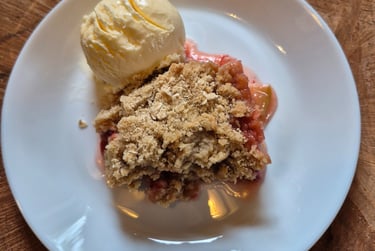

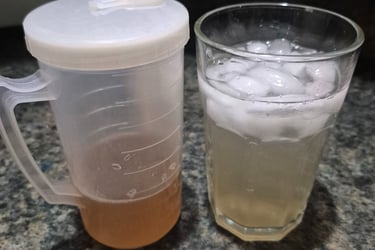

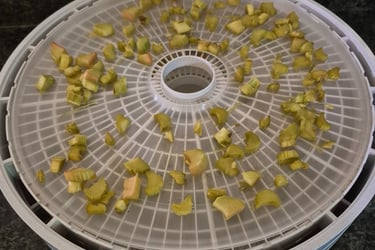

To Wrap Things Up...
Rhubarb is a dependable, easy to grow crop for home gardens. It produces a generous harvest year after year, and it can be used in a lot of different ways. This home grown crop is sure to become a favorite!
If you enjoyed this post, please consider sharing it! The sharing options are on the edge of the screen. Thank you for supporting us!
Also, if you want regular updates about new content, be sure to follow our Facebook page. You'll find regularly posted inspiration, tips, and info! We'd love to have you join us!
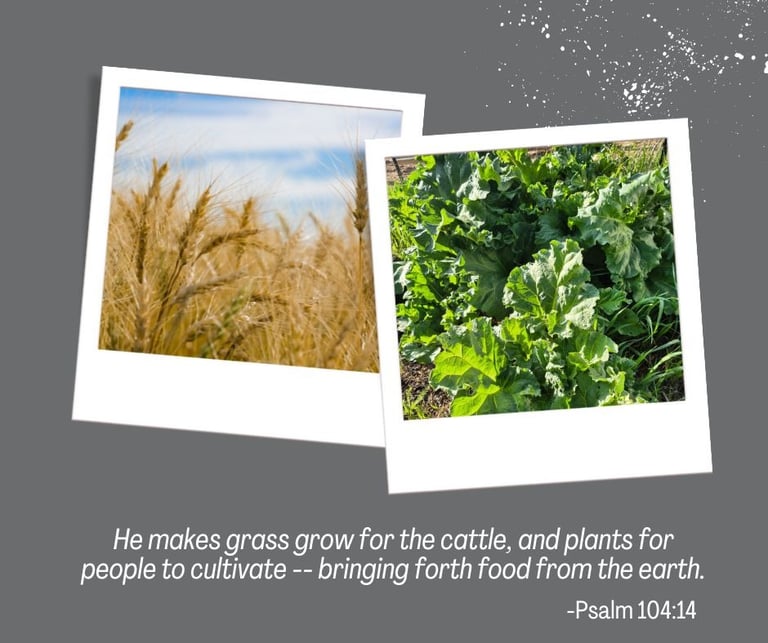

⭐You may also enjoy these posts:
🛍️If you are interested in foraging, these products may be of interest:
Click to save for later!
References & Further Reading
University of Minnesota Extension – Growing Rhubarb in Home Gardens
https://extension.umn.edu/vegetables/growing-rhubarbNational Center for Home Food Preservation – How to Freeze and Can Rhubarb
https://nchfp.uga.eduOld Farmer’s Almanac – Rhubarb: Planting, Growing, and Harvesting
https://www.almanac.com/plant/rhubarbBall Blue Book Guide to Preserving
(Print resource – available at most bookstores or online)PennState Extension – PlantVillage Rhubarb Guide
https://plantvillage.psu.edu/topics/rhubarb/infosOhio State University Extension – Rhubarb Factsheet (HYG-1631)
https://ohioline.osu.edu/factsheet/hyg-1631Super Seeds (Pinetree Garden Seeds) – Rhubarb ‘MacDonald’ Variety
https://www.superseeds.com/products/rhubarb-macdonaldGardener’s Path – Best Rhubarb Varieties to Grow
https://gardenerspath.com/plants/vegetables/best-rhubarb-varieties/#Crimson-RedUniversity of Wisconsin Extension – Rhubarb (Rheum rhabarbarum)
https://hort.extension.wisc.edu/articles/rhubarb-rheum-rhabarbarum/FoodData Central (USDA) – Nutrition Facts for Raw Rhubarb
https://fdc.nal.usda.gov/fdc-app.html#/food-details/168583/nutrients
Be sure to check out our shop!
We have digital products related to outdoor family fun, family travel, Christmas, and more!
Join our community for updates, recommendations, and offers.
We'll give you access to our downloadable files as a thank you!
Adventure Planner
Daily Journal Template
Camping Adventure Planning Packet
We will send regular emails (typically monthly) with outdoor, faith, and family info you can use. You can unsubscribe from those emails at any time.
Connect
info@drawn2creation.com
Follow us!
Copyright Drawn2Creation

